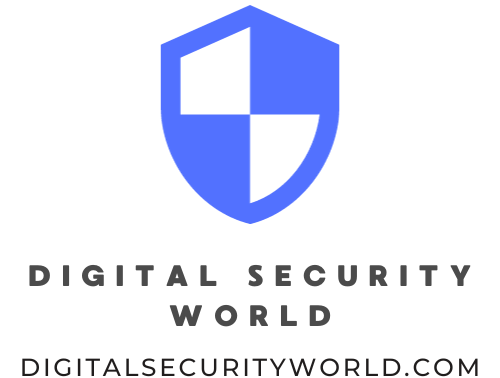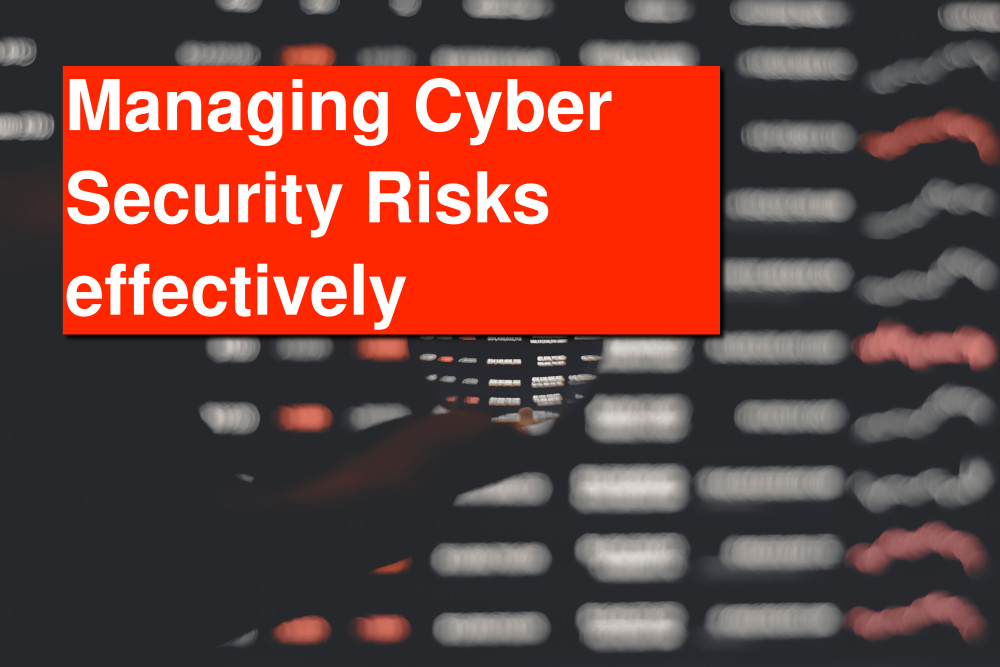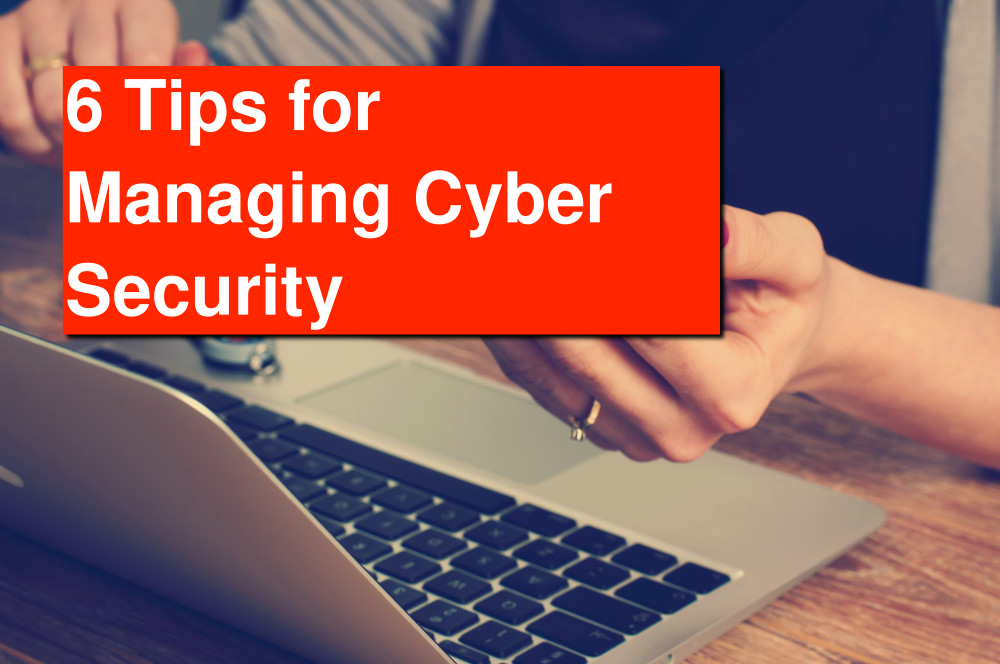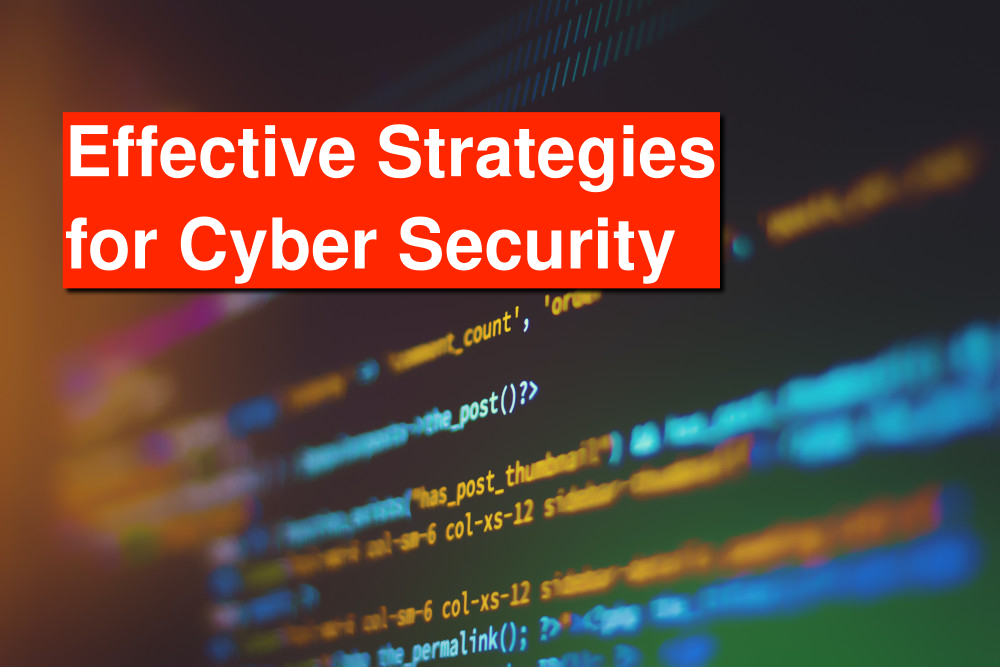In today’s digital age, ensuring the security of your business online has become more important than ever. With the increasing number of cyber threats, it is crucial to take proactive measures to protect your sensitive information and maintain the trust of your customers. This article provides valuable insights and practical tips on how to enhance the security of your online business, safeguard your data, and mitigate potential risks. By implementing these strategies, you can establish a strong security framework and create a safe digital environment for your organization.
Implementing strong passwords and two-factor authentication
Implementing strong passwords and two-factor authentication can significantly enhance the security of your business online. By incorporating these security measures, you can ensure that only authorized individuals have access to your sensitive information and resources. Strong passwords should be complex, containing a combination of uppercase and lowercase letters, numbers, and special characters. It is also important to avoid using easily guessable information, such as your name or birthdate, in your passwords. Additionally, implementing two-factor authentication adds an extra layer of security by requiring users to provide a second verification method, such as a fingerprint scan or a unique code sent to their mobile device. This greatly reduces the risk of unauthorized access, even if a password is compromised. By taking these proactive steps, you can safeguard your business and protect it from potential cyber threats.
Regularly updating and patching software and operating systems
Regularly updating and patching software and operating systems is crucial for enhancing the security of your business online. By keeping your software and operating systems up to date, you can stay one step ahead of potential security vulnerabilities and protect your sensitive data from cyber threats. Updating software ensures that any known security weaknesses or bugs are fixed, making it harder for hackers to exploit them. Additionally, patches are often released to address newly discovered vulnerabilities, so staying current with updates is essential. Neglecting to update your software and operating systems can leave your business exposed to malware attacks, data breaches, and other cyber risks. Therefore, make it a priority to regularly check for software updates, install patches promptly, and enable automatic updates whenever possible. By doing so, you can fortify your defenses and maintain a secure online environment for your business.
Educating employees about online security best practices
Educating employees about online security best practices is crucial in today’s digital landscape. With cyber threats becoming increasingly sophisticated, it’s important for businesses to ensure that their employees are well-informed and equipped with the knowledge to protect sensitive information. Here are some key steps to effectively educate your employees about online security:
- Conduct regular training sessions: Implement regular training sessions to educate employees about the latest security threats, common phishing techniques, and the importance of strong passwords. These sessions can include interactive exercises and real-life examples to make the learning experience more engaging.
- Create a strong security policy: Develop a comprehensive security policy that outlines the expectations and responsibilities of employees when it comes to online security. This policy should cover topics such as acceptable use of company devices, data protection measures, and reporting procedures for security incidents.
- Provide resources and tools: Offer employees access to resources such as educational materials, videos, and online courses that cover various aspects of online security. Additionally, provide them with tools like password managers and antivirus software to enhance their personal security.
- Foster a culture of security awareness: Encourage a culture of security awareness by promoting open communication and providing channels for employees to report any security concerns or suspicious activities. Recognize and reward employees who actively participate in maintaining a secure work environment.
- Conduct simulated phishing exercises: Regularly perform simulated phishing exercises to test employees’ awareness and response to potential threats. This can help identify areas for improvement and reinforce the importance of following security best practices.
Remember, educating employees about online security best practices is an ongoing process. Stay up-to-date with the latest threats and continuously adapt your training programs to ensure your employees are well-prepared to defend against cyber threats.
Using a reliable and secure web hosting provider
When it comes to the security of your business online, using a reliable and secure web hosting provider is paramount. The right web hosting provider can offer a range of features and tools that can significantly enhance the security of your website and protect it from cyber threats.
One of the key advantages of choosing a reliable web hosting provider is the implementation of robust security measures. These measures include regular security updates, firewalls, and intrusion detection systems, which work together to safeguard your website against potential attacks. By entrusting your website to a reputable web hosting provider, you can rest assured that your data and customer information are protected.
Furthermore, a reliable web hosting provider will also provide you with advanced backup solutions. Regular backups are essential to ensure that your website can be restored in the event of a security breach or any other unforeseen circumstances. With a secure and reliable web hosting provider, you can have peace of mind knowing that your valuable data is backed up regularly and can be easily restored if needed.
Click here to preview your posts with PRO themes ››
In addition to security measures and backup solutions, a reputable web hosting provider will offer SSL certificates. SSL certificates encrypt the communication between your website and the users, making it extremely difficult for hackers to intercept any sensitive information. By having an SSL certificate, you not only protect your customers’ data but also establish trust and credibility for your business.
When choosing a web hosting provider, it is important to consider their track record in terms of security. Look for providers that have a solid reputation for providing secure hosting solutions and have a proactive approach to security. Reading reviews and testimonials from other customers can give you insights into their level of expertise and commitment to cybersecurity.
In conclusion, using a reliable and secure web hosting provider is crucial for increasing the security of your business online. By implementing robust security measures, offering advanced backup solutions, and providing SSL certificates, a reputable web hosting provider can significantly reduce the risk of cyber threats and ensure the safety of your website and customer data.
| PROVIDER | PRICE | SSL CERTIFICATE | DDOS PROTECTION |
|---|---|---|---|
| Bluehost | $3.95/mo | Free | Yes |
| SiteGround | $3.95/mo | Free | Yes |
| HostGator | $2.75/mo | Free | Yes |
| A2 Hosting | $3.92/mo | Free | Yes |
| InMotion Hosting | $3.99/mo | Free | Yes |
| DreamHost | $2.59/mo | Free | Yes |
| Hostinger | $0.99/mo | Paid | Yes |
| GreenGeeks | $2.95/mo | Free | Yes |
| WP Engine | $25/mo | Paid | Yes |
| Liquid Web | $19/mo | Paid | Yes |
| HostFav | $2.99/mo | Free | Yes |
| iPage | $1.99/mo | Free | Yes |
| Hostwinds | $3.29/mo | Paid | Yes |
| FastComet | $2.95/mo | Free | Yes |
| HostPapa | $3.95/mo | Free | Yes |
Implementing a robust firewall and intrusion detection system
Implementing a robust firewall and intrusion detection system is crucial for enhancing the security of your business online. By implementing a solid firewall solution, you can effectively control incoming and outgoing network traffic, ensuring that only authorized connections are allowed. A firewall acts as a barrier between your internal network and the external world, preventing unauthorized access and protecting sensitive data from cyber threats.
In addition to a firewall, it is essential to have an intrusion detection system (IDS) in place. An IDS monitors network traffic and detects any suspicious activity or potential attacks. It works by analyzing network packets and comparing them against known attack patterns or abnormal behavior. By promptly identifying and alerting you to potential threats, an IDS helps you take proactive measures to safeguard your business.
When implementing a firewall and IDS, it is important to consider the specific needs and requirements of your business. Conduct a thorough risk assessment to identify potential vulnerabilities and develop a comprehensive security strategy. Regularly update and patch your firewall and IDS to ensure they remain effective against the latest threats.
Furthermore, consider engaging a professional IT security team or consulting with experts in the field to ensure that your firewall and IDS are properly configured and optimized for your business needs. They can assist you in setting up rules and policies, conducting regular system audits, and providing ongoing support and maintenance.
By implementing a robust firewall and intrusion detection system, you can significantly enhance the security of your business online and protect your valuable assets from cyber threats. Prioritize the implementation of these essential security measures to safeguard your business’s reputation, customer data, and overall success.
| FEATURE | DESCRIPTION |
|---|---|
| Advanced Firewall Protection | Provides a strong defense against unauthorized access and malicious attacks by filtering incoming and outgoing network traffic. |
| Intrusion Detection System (IDS) | Monitors network traffic for any suspicious or malicious activities and alerts the system administrator. |
| Intrusion Prevention System (IPS) | Goes beyond IDS by actively blocking potential threats and taking immediate action to prevent network breaches. |
| Application Control | Allows you to define and enforce policies for specific applications, ensuring only authorized programs are allowed to run on the network. |
| Real-time Monitoring and Reporting | Provides continuous monitoring of network traffic and generates detailed reports on detected threats and security incidents. |
| VPN Support | Enables secure remote access to the network by establishing encrypted connections over the internet. |
| Traffic Shaping | Manages and controls network traffic to optimize performance and prioritize critical applications. |
| Centralized Management | Allows for centralized configuration, monitoring, and management of multiple firewalls and IDS/IPS devices. |
| Regular Updates and Patch Management | Ensures that the firewall and IDS/IPS systems are up-to-date with the latest security patches and threat intelligence. |
| Integration with Security Information and Event Management (SIEM) | Integrates with SIEM solutions to provide comprehensive visibility and correlation of security events across the network. |
Regularly backing up important data and storing it securely
Regularly backing up important data and storing it securely is crucial for the security of your business online. With the increasing threat of cyberattacks and data breaches, it is essential to have a robust backup strategy in place to protect your valuable information.
By regularly backing up your important data, you can ensure that even in the event of a security breach or hardware failure, your business will not suffer significant losses. It is recommended to perform automated backups on a daily or weekly basis, depending on the volume and frequency of data changes.
When it comes to storing the backup data securely, there are several options to consider. Cloud storage services provide a convenient and reliable solution, allowing you to store your data off-site and access it from anywhere with an internet connection. Look for reputable cloud providers that offer encryption and strong security measures to safeguard your sensitive information.
Another option is to use external hard drives or network-attached storage devices to store your backups locally. This provides an added layer of security as the data remains within your physical control. However, it is important to ensure that these devices are regularly updated, protected with strong passwords, and stored in a secure location.
Click here to preview your posts with PRO themes ››
In addition to regular backups, it is important to test the restoration process periodically to verify the integrity of your backups. This ensures that your backups are complete and can be successfully restored in the event of a data loss incident.
Remember, backing up your important data and storing it securely is not a one-time task, but an ongoing practice that should be prioritized. By implementing a comprehensive backup strategy, you can minimize the risk of data loss and protect your business from potential security threats.
Enforcing strict access controls and user permissions
Enforcing strict access controls and user permissions is vital for enhancing the security of your business online. By implementing robust access control mechanisms, you can effectively manage who has the ability to view, edit, and share sensitive information within your organization. This helps prevent unauthorized access and reduces the risk of data breaches or malicious activities.
To enforce strict access controls and user permissions, consider the following best practices:
- Role-based Access Control (RBAC): Implement a RBAC system that assigns specific roles to users based on their responsibilities and requirements. This ensures that each user has only the necessary permissions to perform their tasks, limiting the potential for accidental or intentional misuse.
- Least Privilege Principle: Follow the principle of least privilege, granting users the minimum level of access required to fulfill their job responsibilities. Regularly review and update user permissions to reflect any changes in job roles or responsibilities.
- Two-Factor Authentication (2FA): Implementing 2FA adds an extra layer of security by requiring users to provide two forms of identification before accessing sensitive business resources. This can include something the user knows (e.g., a password) and something the user possesses (e.g., a unique security token or biometric factor).
- Regular Access Reviews: Conduct regular reviews of user permissions to identify and remove any unnecessary or outdated access rights. This helps ensure that only authorized individuals have access to critical systems and data.
- Strong Password Policies: Enforce strong password policies, including the use of complex passwords, regular password changes, and the prohibition of password sharing. Educate employees about the importance of maintaining strong and unique passwords to minimize the risk of unauthorized access.
By enforcing strict access controls and user permissions, you can significantly strengthen the security of your business online. These measures help protect sensitive data, maintain regulatory compliance, and mitigate the risk of cyber threats. Remember, security is an ongoing process, so regularly review and update your access control measures to stay ahead of emerging threats.
| ACCESS CONTROL METHOD | DESCRIPTION |
|---|---|
| Two-factor authentication | Requires users to provide two forms of identification to access the system, such as a password and a unique code sent to their mobile device. |
| Role-based access control | Assigns permissions based on the roles and responsibilities of individual users within the organization. |
| Regular access reviews | Conducts periodic reviews to ensure that user access privileges are appropriate and up-to-date. |
| Account lockout policies | Automatically locks user accounts after a certain number of failed login attempts to protect against brute-force attacks. |
| Least privilege principle | Grants users only the minimum access privileges necessary to perform their job functions. |
| Session timeout settings | Automatically logs users out of the system after a period of inactivity to prevent unauthorized access. |
| Audit trails and logging | Logs and monitors user activities within the system to detect any suspicious or unauthorized behavior. |
| Password complexity requirements | Enforces strong password policies, such as minimum length, use of alphanumeric characters, and regular password updates. |
| User training and awareness programs | Educates users about best practices for maintaining security, recognizing phishing attempts, and protecting sensitive information. |
Conducting regular security audits and vulnerability assessments
Conducting regular security audits and vulnerability assessments is crucial for ensuring the safety and protection of your business online. In today’s digital landscape, where cyber threats are constantly evolving, businesses need to stay one step ahead of potential attackers. By performing these audits and assessments, you can identify and address any weaknesses or vulnerabilities in your online infrastructure before they can be exploited.
Security audits involve a comprehensive review of your entire business’s security measures, policies, and protocols. It helps to assess the effectiveness of your current security systems and identify any gaps or areas that require improvement. This process includes evaluating your network security, access controls, data encryption, backup systems, and employee security training.
Vulnerability assessments, on the other hand, focus on identifying specific weaknesses or vulnerabilities in your systems. This involves using specialized tools and techniques to scan your network and applications for any potential security flaws. By conducting these assessments regularly, you can detect and patch vulnerabilities before they can be exploited by hackers.
To conduct effective security audits and vulnerability assessments, it’s important to follow a structured approach. Start by defining your objectives and scope, ensuring that you cover all aspects of your online business. Next, gather the necessary tools and resources, such as vulnerability scanners and penetration testing frameworks. Then, perform the assessments, analyze the results, and prioritize any identified vulnerabilities based on their severity.
Once vulnerabilities are identified, it’s essential to take prompt action to mitigate the risks. This may involve updating software and systems, implementing additional security controls, or providing employee training on best practices. Regularly repeating the audit and assessment process will help you maintain a proactive approach to security and stay on top of emerging threats.
By conducting regular security audits and vulnerability assessments, you can enhance the overall security posture of your business and reduce the risk of data breaches or cyberattacks. This proactive approach demonstrates your commitment to protecting sensitive information and instills confidence in your customers and partners. Remember, security is an ongoing process, and staying vigilant is the key to keeping your business safe online.
Click here to preview your posts with PRO themes ››
Encrypting sensitive data and communications
In today’s digital landscape, ensuring the security of sensitive data and communications is of utmost importance for businesses. Encrypting sensitive data and communications provides an added layer of protection against unauthorized access and potential data breaches.
By encrypting sensitive data, businesses can transform their information into a coded form, making it unreadable to anyone without the proper decryption key. This ensures that even if the data is intercepted or stolen, it remains useless to unauthorized individuals.
Similarly, encrypting communications involves encoding the messages being transmitted between parties. This prevents eavesdroppers from intercepting and understanding the contents of the communication. Encryption algorithms use complex mathematical calculations to encode the data, increasing the difficulty for attackers to crack the code and access the information.
Implementing encryption techniques is a proactive measure that businesses can take to safeguard their sensitive data and communications. It helps to foster trust among customers and business partners, as it demonstrates a commitment to protecting confidential information.
There are various encryption methods available, including symmetric encryption, asymmetric encryption, and secure protocols such as SSL/TLS. Each method has its own strengths and weaknesses, and businesses should carefully choose the most appropriate method based on their specific needs and requirements.
In addition to encrypting data and communications, businesses should also consider implementing other security measures such as strong passwords, multi-factor authentication, and regular security audits. By adopting a comprehensive approach to cybersecurity, businesses can significantly reduce the risk of data breaches and ensure the integrity and confidentiality of their sensitive information.
Monitoring network traffic and detecting any suspicious activity
Monitoring network traffic is a crucial aspect of maintaining the security of your business online. By proactively detecting any suspicious activity within your network, you can prevent potential cyber threats and ensure the safety of your sensitive data. Here are some effective strategies to help you increase the security of your business online through monitoring network traffic.
- Implement a robust network monitoring system: Invest in a reliable network monitoring tool that can track and analyze all incoming and outgoing traffic. This tool should have advanced features such as real-time alerts, anomaly detection, and traffic pattern analysis.
- Set up intrusion detection and prevention systems (IDPS): An IDPS can detect and block any unauthorized access attempts or malicious activities within your network. It can identify and mitigate various types of attacks, including DDoS attacks, malware infections, and data breaches.
- Utilize traffic analysis techniques: Employ advanced traffic analysis techniques to identify any unusual patterns or behaviors within your network. This can include analyzing packet headers, flow data, and payload content. By examining traffic characteristics, you can identify potential threats and take timely action.
- Monitor user activity: Keep a close eye on user behavior and activities within your network. Establish user access controls, monitor login attempts, and track privilege escalation. Any suspicious or unauthorized actions should be promptly investigated and addressed.
- Regularly update and patch your network devices: Ensure that all network devices, including routers, switches, and firewalls, are up to date with the latest firmware and security patches. Regularly check for vulnerabilities and promptly apply necessary updates to protect against known exploits.
- Encrypt network traffic: Implement strong encryption protocols, such as SSL/TLS, to secure your network traffic. This prevents unauthorized access to sensitive information and ensures the privacy and integrity of data in transit.
- Conduct regular network assessments: Perform periodic audits and penetration testing to identify any vulnerabilities or weaknesses in your network infrastructure. This will help you proactively address any security gaps and ensure that your network is well-protected.
By implementing these strategies and maintaining a proactive approach to monitoring network traffic, you can significantly enhance the security of your business online. Remember, the key to effective network security is staying one step ahead of potential threats and continuously adapting your security measures to mitigate risks.
What are the best practices for creating strong passwords?
To create strong passwords, use a combination of upper and lowercase letters, numbers, and special characters. Avoid using common words or phrases, and never reuse passwords across multiple accounts.
What is two-factor authentication?
Two-factor authentication is an extra layer of security that requires users to provide two forms of identification to log in to an account. This can include something the user knows (such as a password) and something the user has (such as a code sent to their phone).
What is phishing, and how can I avoid it?
Phishing is a type of cyber attack where attackers trick users into providing sensitive information (such as passwords or credit card numbers) by posing as a trustworthy entity. To avoid phishing, be wary of unsolicited emails or messages and never provide sensitive information unless you are certain of the recipient's identity.
What is a VPN, and how can it increase my online security?
A VPN (virtual private network) is a tool that encrypts your internet connection and routes it through a remote server. This can help keep your browsing activity private and protect you from cyberattacks such as hacking or identity theft.
In conclusion, increasing the security of your business online is crucial in today’s digital landscape. By implementing robust security measures such as using strong passwords, regularly updating software and applications, conducting employee training on cybersecurity best practices, and implementing multi-factor authentication, you can significantly reduce the risk of cyberattacks and protect your sensitive business data. Remember, investing in the right security measures now will save you from potential financial and reputational damages in the future. Stay vigilant and stay secure!




